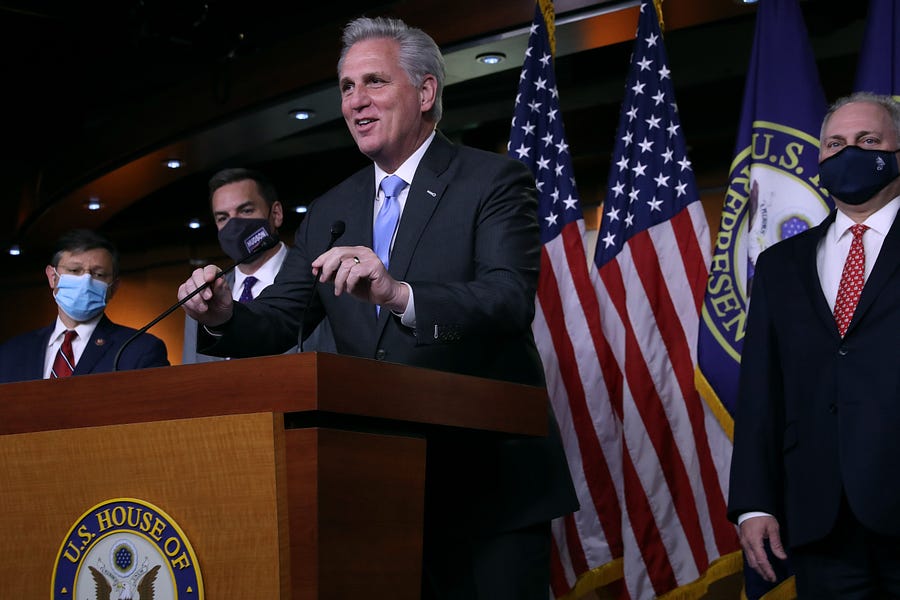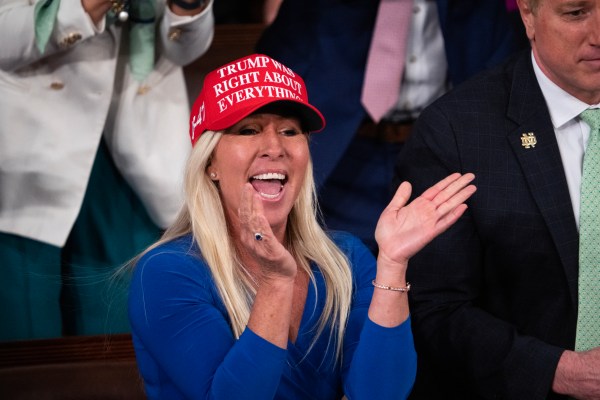When 126 Congressional Republicans and 18 Republican state attorneys general endorsed a lawsuit by the state of Texas asking the Supreme Court to throw out election results in Michigan, Wisconsin, Pennsylvania, and Georgia, they were not simply doing President Trump’s bidding.
They were taking a stance almost identical to the one made in 1956 when 19 senators and 77 House members, all of them Democrats from states once part of the Confederacy, signed the Southern Manifesto, pledging their opposition to the Supreme Court’s 1954 Brown v. Board of Education decision declaring “separate but equal” has no place in the nation’s schools. Sen. Strom Thurmond of South Carolina wrote the initial draft of the Southern Manifesto, officially titled the “Declaration of Constitutional Principles,” before it went through a series of revisions and was introduced in the House by Representatives by Howard Smith of Virginia and in the Senate by Sen. Walter George of Georgia.
The targets of the Southern Manifesto were the nation’s black public school children, isolated in segregated schools. The unnamed targets of the Texas lawsuit and most other election suits filed by Trump supporters are mostly black voters in urban areas.
What is more, just as the signers of the Southern Manifesto couched their language in neutral terms, saying separate but equal allowed for “amicable relations between the white and Negro races,” the Trump supporters have followed a similar pattern. Rather than directly speak of race, they talk of “voter fraud.”
Trump’s lawyer Rudy Giuliani summed up the president’s strategy in talking about Michigan, where Giuliani charged 300,000 “illegitimate ballots” were cast—primarily, he believed, in Wayne County, home of Detroit. “These ballots were all cast basically in Detroit that Biden won 80-20,” Giuliani observed in a highly publicized news conference. “So you see it changes the result of the election in Michigan if you take out Wayne County.” What Giuliani did not say was that Trump had the same objections to voting results in Philadelphia with its 44 percent black population and in Atlanta with its 51 percent black population.
Not all Southern Democrats signed the Southern Manifesto. Speaker of the House Sam Rayburn and future president Lyndon Johnson, both from Texas, did not sign it. And in Tennessee, senators Al Gore Sr. and Estes Kefauver did not sign the Manifesto. But for most southern Democrats, the Manifesto was politically hard to resist. It gave respectability to any Southern politician opposed to desegregation and intimidated moderates who sought compromise.
The Southern Manifesto signers saw themselves, in the words of their manifesto, as “a minority in the present Congress,” but they believed they could make allies of white voters around the country who felt threatened by “revolutionary changes in our public schools systems.” The signers’ optimism was rewarded. Opposition to desegregation in public schools spread to the North quickly, especially in cities that relied on busing to desegregate their schools. Today the resegregation of public schools has meant more than half the nation’s school children are in districts that are either 75 percent white or 75 percent nonwhite. And black children are more likely to be in schools that are both segregated and in high-poverty areas.
As for the South’s political makeup, it has gone from Democratic to Republican with the help of the Southern Manifesto. No region more quickly became part of what Republican strategist Kevin Phillips labeled the “emerging Republican majority.”
Whether today’s Trump-inspired lawsuits will have the same kind of success over time that the Southern Manifesto did is unclear. Trump and his supporters have suffered defeat after defeat in court, but those losses do not suggest long-run political damage to Trump himself. On the contrary, the suits have made it easier for Trump to raise money in the wake of the election. His new political action committee, Save America, has proven especially adept at reaching donors, and he has retained his hold on much of the Republican Party. Politico reported in early December that Trump had raised more than $200 million and that the majority of it would go to the PAC. A Reuters/Ipsos poll conducted in mid-November showed 52 percent of Republicans believed Trump rightfully won the election and 68 percent believed the election may have been rigged.
The lawsuits, in combination with direct appeals by Trump’s lawyers to Republican-controlled state legislatures to set aside election results and appoint a slate of pro-Trump electors to the Electoral College instead, were designed to take advantage of weaknesses in our Electoral College system. The weaknesses, as historian Alexander Keyssar points out in his recent book, Why Do We Still Have the Electoral College?, have long been known. What Trump did was give them new life. The Trump Electoral College strategy failed in 2020. Republican and Democratic election officials refused to violate Electoral College norms that say a state’s electors must reflect the winner of a state’s popular vote.
But that does not mean that, if he gets a chance, Trump won’t try a similar electoral strategy in 2024 in key states. His Lost Cause politics may differ from those of the Southern Manifesto, but Trump’s politics remain rooted in the belief that key to making America great again is making sure black citizens are kept from full participation in the nation’s political life.
Nicolaus Mills is professor of American literature at Sarah Lawrence College and author of Winning the Peace: The Marshall Plan and America’s Coming of Age as a Superpower.






Please note that we at The Dispatch hold ourselves, our work, and our commenters to a higher standard than other places on the internet. We welcome comments that foster genuine debate or discussion—including comments critical of us or our work—but responses that include ad hominem attacks on fellow Dispatch members or are intended to stoke fear and anger may be moderated.
With your membership, you only have the ability to comment on The Morning Dispatch articles. Consider upgrading to join the conversation everywhere.